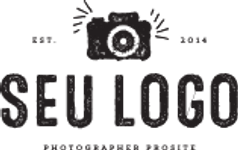Production design is the art acting classes near me of bringing the world of a film to life. It involves creating everything from sets to props, costumes, and locations, making it an essential part of visual storytelling. In this article, we explore the key aspects of production design and how it shapes the audience's experience.
The Role of the Production Designer
The production designer is responsible for the visual style and look of a film. They collaborate with the director to create an environment that reflects the story's themes, mood, and time period. Every detail, from furniture to the color of the walls, must support the narrative and character development.
Designing the Set: From Concept to Reality
The process of designing a set starts with conceptualizing the environment that fits the story. Whether it's a bustling city or an isolated cabin in the woods, the set must reflect the emotional tone of the scene. Set design requires careful planning, research, and creative thinking to transform a script into a tangible space.
Costume Design: Telling a Story Through Clothes
Costumes are a vital aspect of production design, as they convey much about a character’s personality, status, and journey. The costume designer works to reflect the character's world, social class, and time period through clothing choices. These visual cues help the audience connect with the characters on a deeper level.
The Importance of Props
Props are the objects that characters interact with during the film, and they can tell a lot about a character's personality and situation. Whether it's a weapon, a book, or a piece of jewelry, props are essential tools in a production designer’s arsenal. They enhance realism and deepen the narrative.
Location Scouting: Finding the Perfect Setting
Location scouting is a crucial part of production design. Finding the right location sets the tone for the film and can save significant costs compared to building a set. The location must align with the script's requirements, whether it’s a busy urban area or a desolate countryside, contributing to the story’s atmosphere.
Creating Visual Atmosphere
Production design plays a key role in establishing the atmosphere of a film. From the lighting choices to the textures and colors of a room, every element contributes to the emotional tone. A dark, moody set can evoke tension, while bright, open spaces can create feelings of warmth or optimism.
Collaborating with the Director and Cinematographer
The production designer works closely with the director and cinematographer to ensure the visual elements support the narrative and artistic vision. They must understand how the set and costumes will be filmed, taking into account camera angles, lighting, and framing. Collaboration ensures that every visual detail complements the story.
Creating a Sense of Time and Place
The design of a film’s world must accurately reflect its time period and setting. Whether it's a historical drama or a futuristic sci-fi, production design helps establish where and when the story takes place. Through careful research and attention to detail, the production designer creates a world that feels authentic and immersive.
Building Immersive Worlds
In genres like fantasy or science fiction, production design is even more critical. These films often require the creation of entirely new worlds or fantastical elements. From alien planets to medieval castles, production designers build immersive environments that allow the audience to suspend disbelief and fully engage with the story.
Budgeting and Problem-Solving
Production design also involves a significant amount of problem-solving, especially when working within a budget. Designers must make creative choices to bring the director’s vision to life while staying within financial constraints. They need to balance quality with practicality, ensuring that every design element serves the narrative without compromising the film's production value.
